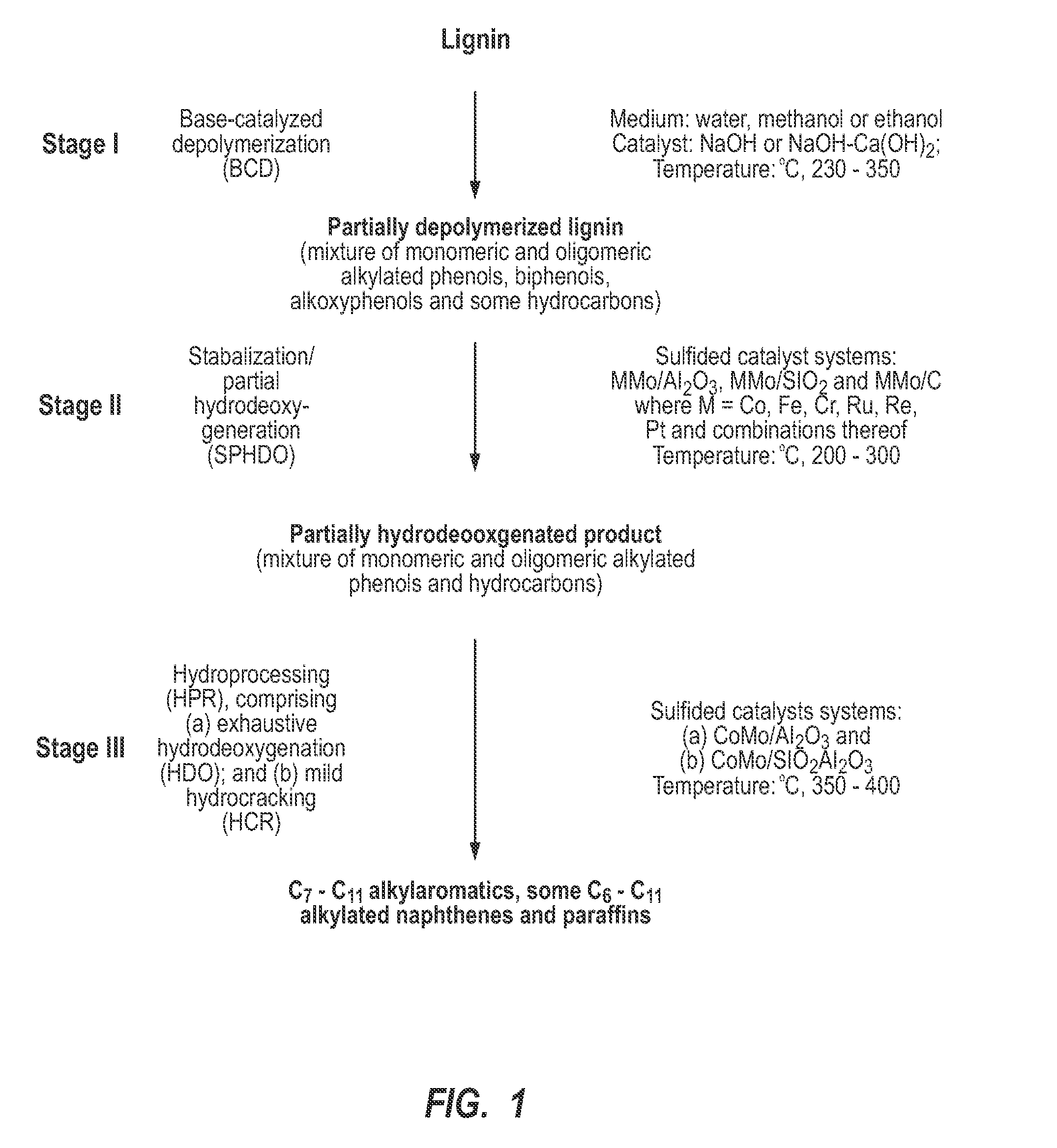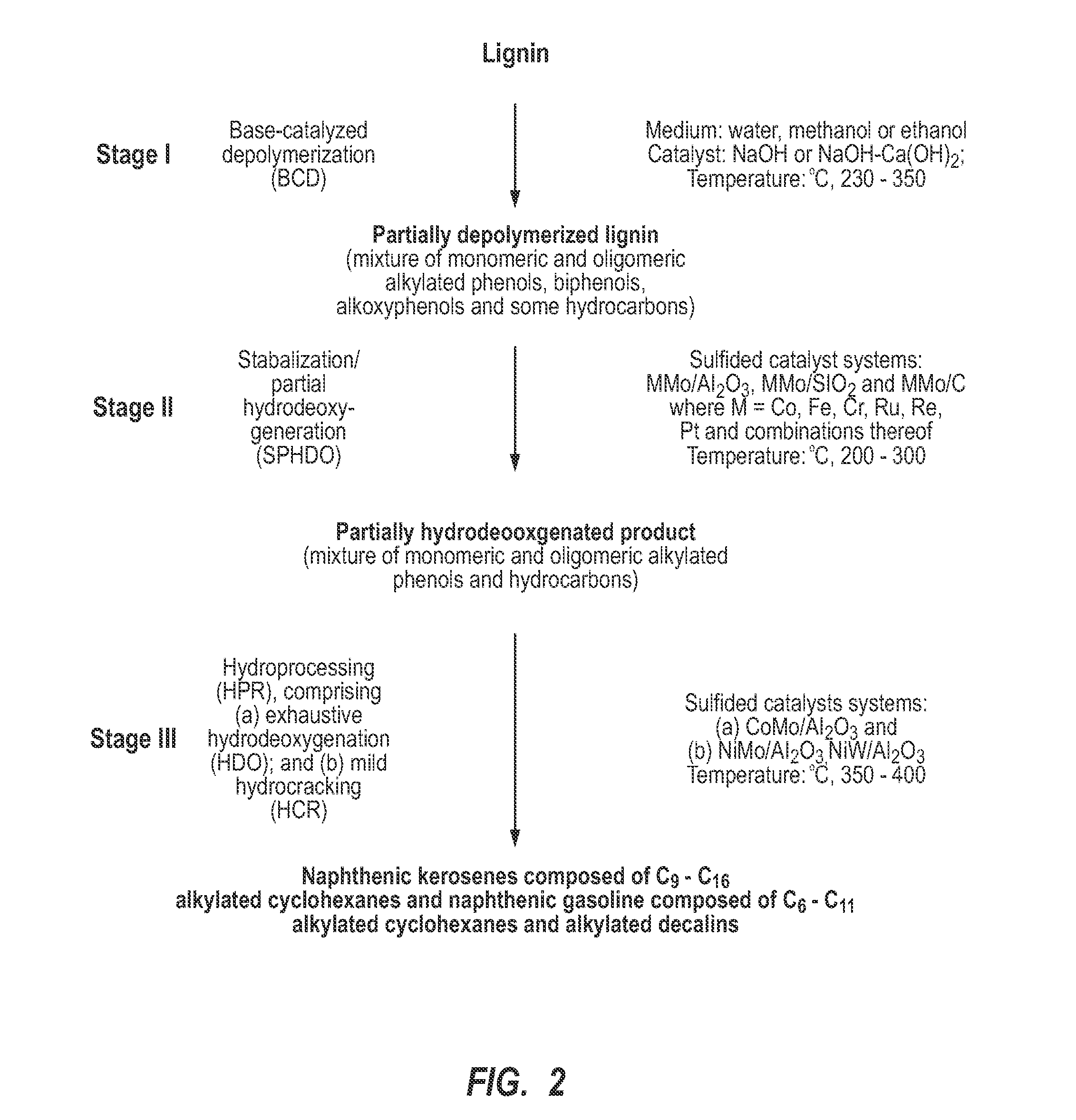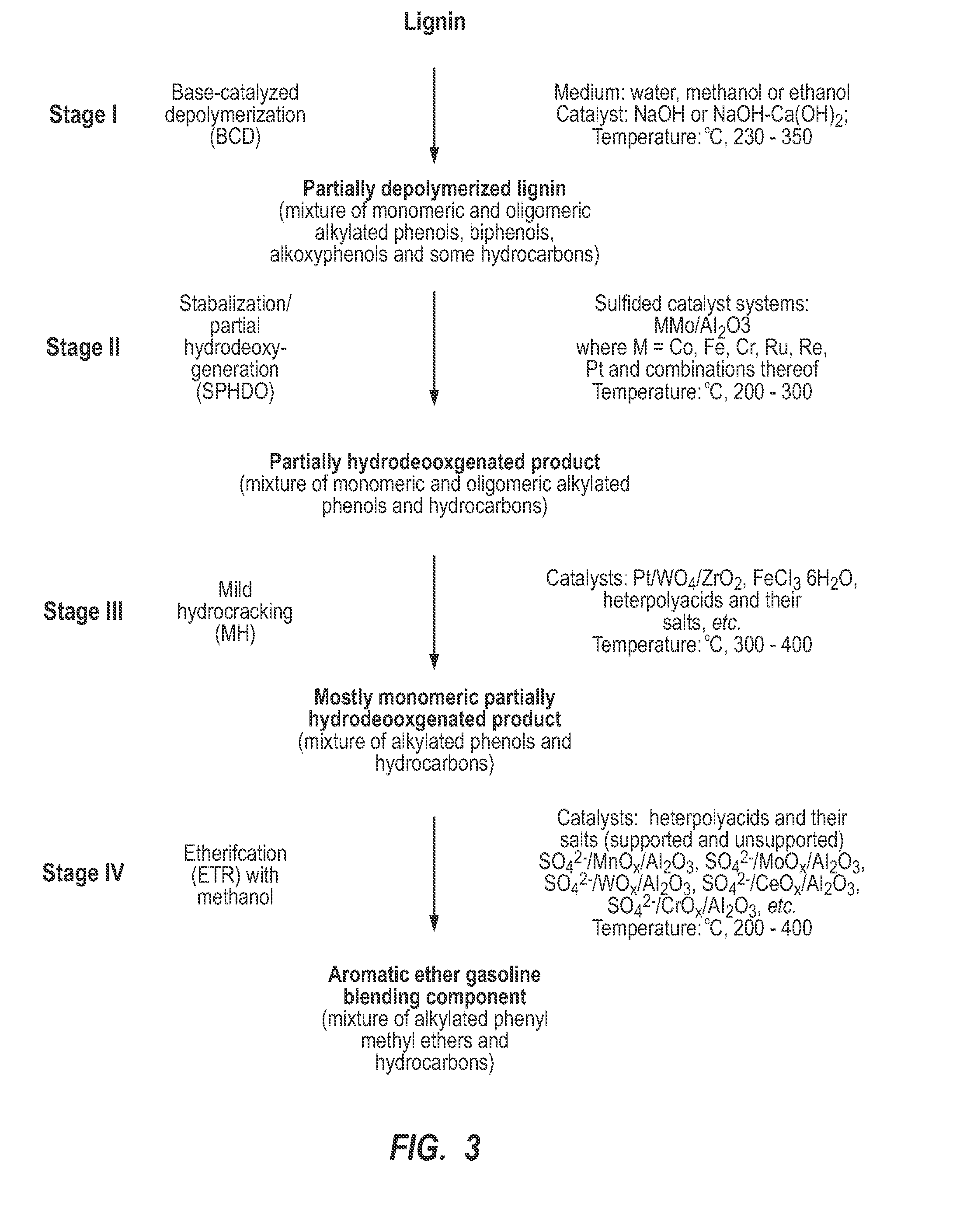Processes for catalytic conversion of lignin to liquid bio-fuels and novel bio-fuels
a technology of bio-fuels and lignin, which is applied in the direction of bio-fuels, fuels, organic chemistry, etc., can solve the problems of limited lignin supply, lignin appears as residual material with limited opportunities for its utilization, and requires significant restructure and/or replacement, etc., to achieve acceptable processing conditions and improve yields
- Summary
- Abstract
- Description
- Claims
- Application Information
AI Technical Summary
Benefits of technology
Problems solved by technology
Method used
Image
Examples
example 1
[0083] Base-Catalyzed Depolymerization (BCD)
[0084] A 15.0 g of solid Organosolv lignin (Aldrich) sample dissolved in 150 g of 5.0% aqueous solution of NaOH was introduced in a 300 cc autoclave reactor (Autoclave Engineers). The reactor was purged with N2 prior to the start of the heat-up period. After reaching a temperature of 295° C., the reaction was carried out for 30 minutes, and then the reactor was cooled down to room temperature and depressurized. The autoclave reactor is allowed to proceed with a constant stirring rate of 500 rpm (100 rpm during heat-up and cool-down periods). The solid / liquid reaction product was removed from the reactor and acidified with an aqueous 20% H2SO4 to a pH of 2 to 3, with constant stirring using a magnetic stirrer. After overnight storage, the solid / liquid product was separated from the water solution by filtration, washed with distilled water, dried in a stream of N2, and subjected to Soxhlet extraction with ethyl ether. The extract was dried ...
example 2
[0098] Base-Catalyzed Depolymerization (BCD).
[0099] A 15.0 g of solid Organosolv lignin (Aldrich) sample was introduced in a 300 cc autoclave reactor (Autoclave Engineers) then 150 g of 5.0% methanolic solution of NaOH. The reactor was purged with N2 prior to the start of the heat-up period. After reaching a temperature of 295° C., the reaction was carried out for 30 minutes, and then the reactor was cooled down to room temperature and depressurized. The autoclave reactor was allowed to proceed with a constant stirring rate of 500 rpm (100 rpm during heat-up and cool-down periods). The solid / liquid reaction product was removed from the reactor and after adding 200 g of water was acidified with an aqueous 20% H2SO4 to a pH of 2 to 3, with constant stirring using a magnetic stirrer. After 16 hour of storage, the solid / liquid product is separated from the water solution by filtration, washed with distilled water, dried in the stream of N2, and subjected to Soxhlet extraction with ethy...
PUM
| Property | Measurement | Unit |
|---|---|---|
| temperature | aaaaa | aaaaa |
| temperature | aaaaa | aaaaa |
| temperature | aaaaa | aaaaa |
Abstract
Description
Claims
Application Information
 Login to View More
Login to View More - R&D
- Intellectual Property
- Life Sciences
- Materials
- Tech Scout
- Unparalleled Data Quality
- Higher Quality Content
- 60% Fewer Hallucinations
Browse by: Latest US Patents, China's latest patents, Technical Efficacy Thesaurus, Application Domain, Technology Topic, Popular Technical Reports.
© 2025 PatSnap. All rights reserved.Legal|Privacy policy|Modern Slavery Act Transparency Statement|Sitemap|About US| Contact US: help@patsnap.com



